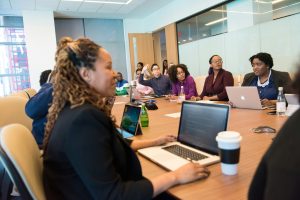Neurodiverse Classrooms: Why One-Size-Fits-All Fails
As classrooms become more diverse and inclusive, there is a growing recognition of the importance of accommodating students with diverse learning needs. One group that has garnered increased attention in recent years is neurodiverse students. This term refers to individuals who have neurological differences, such as autism, dyslexia, ADHD, and other developmental disorders. These students require different supports and accommodations in the classroom, yet many schools continue to use a one-size-fits-all approach, causing these students to struggle. In this article, we will explore why a one-size-fits-all approach fails in neurodiverse classrooms and how schools can better support the unique needs of these students.
The Problem with One-Size-Fits-All
The Myth of a “Normal” Student
Many schools operate under the assumption that there is a “normal” student and that all students should conform to this standard. This approach completely ignores the fact that students have different backgrounds, experiences, and abilities. Neurodiverse students, in particular, face challenges that can make it difficult for them to thrive in a traditional classroom setting.
The Dangers of a One-Size-Fits-All Approach
For neurodiverse students, a one-size-fits-all approach can be detrimental to their academic, emotional, and social well-being. By forcing these students to fit into a mold that does not cater to their unique needs, schools are setting them up for failure. This can lead to frustration, anxiety, and even depression, as these students feel like they do not belong in the classroom.
Moreover, this approach can also hinder the learning of other students in the class. By not providing individualized support, teachers may struggle to meet the needs of neurodiverse students, leading to disruptions and distractions in the classroom.
The Importance of Individualized Support
Recognizing the Diversity in Neurodiversity
One of the biggest misconceptions about neurodiversity is that all students with developmental disorders have the same needs and require the same interventions. This is far from the truth. Each student is unique and requires an individualized approach to meet their specific needs. For example, while some students with autism may benefit from a quiet, structured environment, others may thrive in a more dynamic and interactive class setting.
Accommodations and Modifications
To provide individualized support, teachers need to understand the difference between accommodations and modifications. Accommodations are changes made to how a student learns or demonstrates their knowledge, such as providing extra time for exams or allowing the use of assistive technology. Modifications, on the other hand, involve changing the content or difficulty level of the materials. Both accommodations and modifications are crucial to creating an inclusive learning environment for neurodiverse students.
Best Practices for Supporting Neurodiverse Students
Educate Yourself and Your Students
The first step in creating a neurodiverse-friendly classroom is to educate yourself and your students about different developmental disorders. This will not only help you understand the needs and strengths of your neurodiverse students but also foster a culture of acceptance and inclusivity in the classroom.
Collaborate with Parents and Special Education Teachers
Collaboration is key when it comes to supporting neurodiverse students. Parents and special education teachers are an invaluable source of information about these students’ needs and can offer valuable insights and suggestions on how to best support them in the classroom.
Implement Universal Design for Learning
Universal Design for Learning (UDL) is an approach that aims to create inclusive learning environments that meet the needs of all students, including those with diverse learning needs. UDL involves providing multiple means of representation, engagement, and expression, allowing all students to access the curriculum in a way that works best for them.
Conclusion
Neurodiverse students are an integral part of our classrooms, and it is essential to recognize and accommodate their unique needs. One-size-fits-all approaches not only fail these students but also hinder the learning of all students in the classroom. By embracing individualization and collaborating with families and special education teachers, we can create inclusive learning environments that support all students, regardless of their neurological differences.











